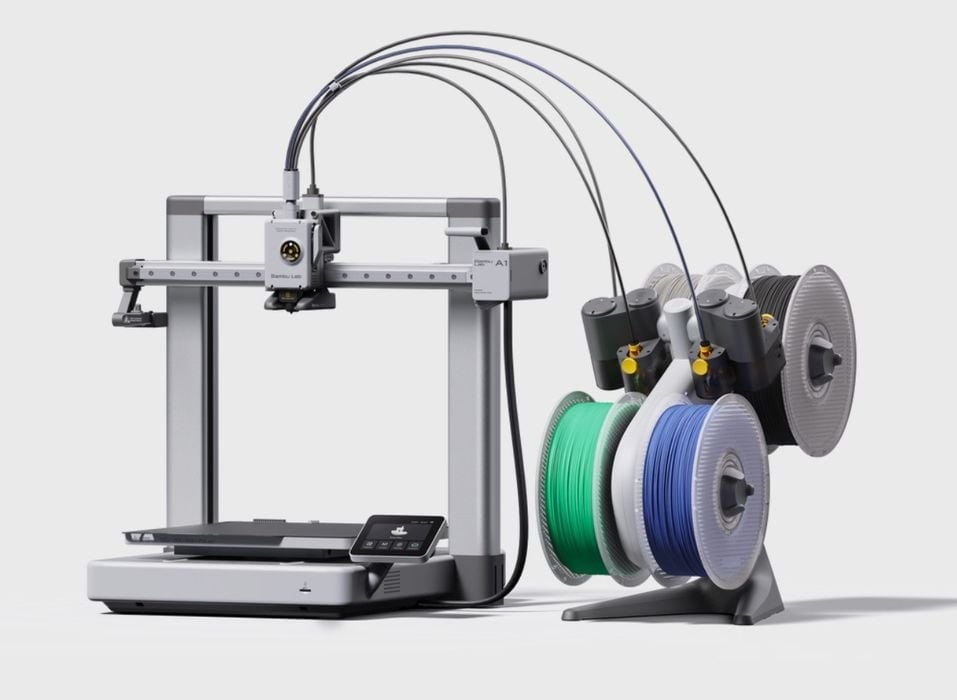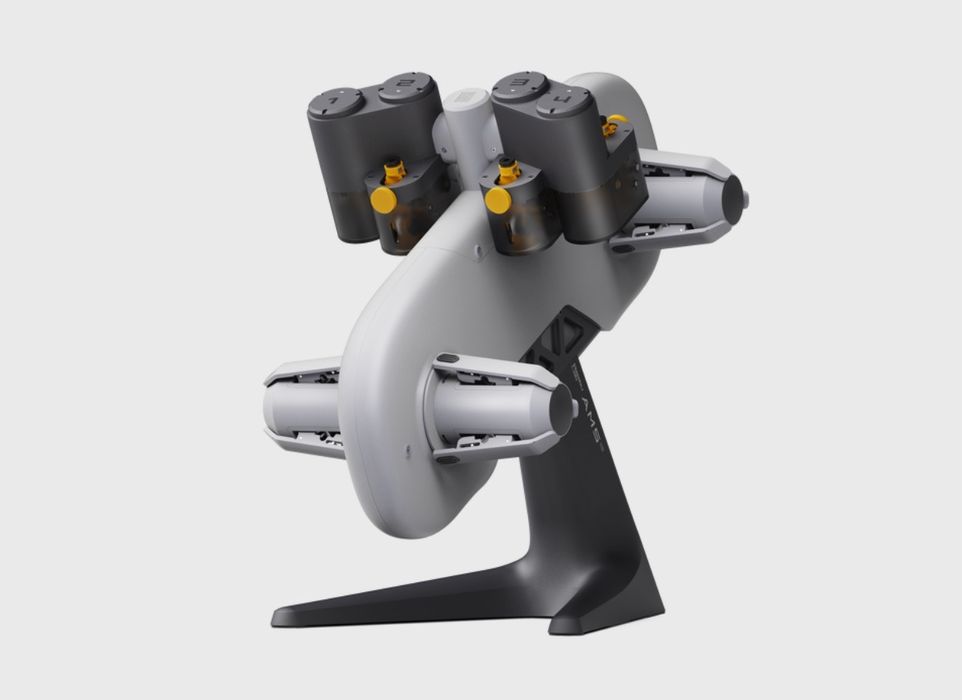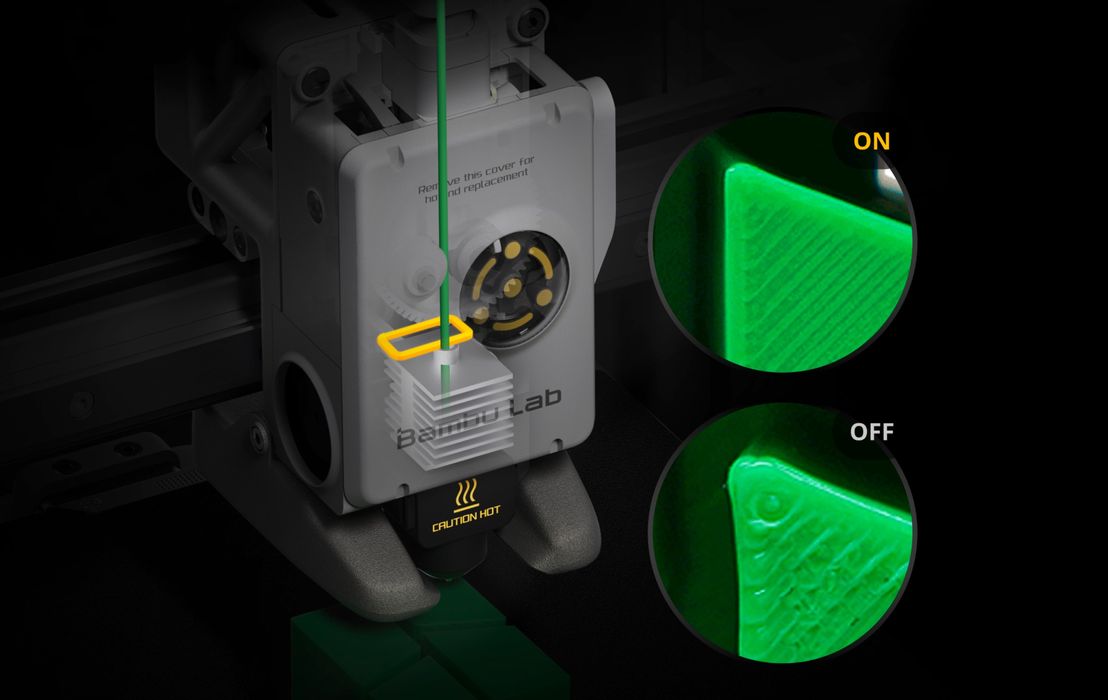
Bambu Lab officially announced a new desktop 3D printer, the A1.
The company has been busy this year, with their surprise announcement of the A1 mini a few months ago. It seems that the new A1 is the “not mini” counterpart to the prior machine. Bambu Lab has been rocking the industry with revolutionary products over the past year and a half, and announcing the mini before the standard model somehow seems appropriate.
If one were to visually compare the A1 with the A1 mini you’d notice a large number of similarities. In fact, the technology seems identical, with the major difference being the size of the machine.
Comparing the specifications between the A1 and A1 mini is quite revealing. Basically all the specifications are identical with the exception of the build volume. On the mini, it’s 180 x 180 x 180 mm, while on the A1 it’s 256 x 256 x 256 mm.
This addresses the most frequently heard issue that I’ve heard about the mini — “it’s too small for me”.
By the way, I encourage you to read our extensive review of the A1 mini, where you can see how Bambu Lab’s “A1” concept works. The findings in the A1 mini review are almost certainly applicable to the A1, which we haven’t tested yet.
If you don’t want to go through our 4500 word A1 mini review, here are the basic features of the A1:
- Build volume 256 x 256 x 256 mm
- i3-style motion system
- All metal hot end, reaches 300C
- Quick swap 0.4mm nozzle with optional 0.2, 0.6 and 0.8 mm
- Single 1.75mm extrusion system
- Magnetic flexible steel coated print plate (max 100C)
- Maximum volumetric flow of 28 cubic mm/s
- Webcam with timelapse feature
- Filament run out sensor
- Power loss and recovery procedure
- 3.5” color touch screen
- WiFi networking and SD card slot
And here are the advanced features of the A1, which also appear on the A1 mini:
- High speed printing up to 500mm/s at 10,000 m/s/s acceleration
- Closed loop fan controls
- Filament odometer
- Filament tangle sensor
- Dual core cortex M4 controller
- Smartphone app for remote monitoring and control
- Cloud integration for MakerWorld 3D model access
- Eddy current sensor for dynamic flow control
- Vibration compensation
- Fully automated calibration

In addition to the A1, Bambu Lab also announced that the A1 is compatible with the AMS lite, a four-spool material switching unit previously used on the A1 mini.
The AMS lite is able to very reliably swap colors in mid-print by pulling back the filament and re-inserting a filament from a different spool. There’s a cutting blade used to ensure no blobs mess up the swapping process. In my testing of the AMS lite with the A1 mini, I found it be basically flawless, so I expect the same will be true on the A1.
There’s one possible constraint you should be aware of: the machine’s recommended materials are PLA, PETG, PVA and TPU, which no doubt print very well. However, other high temperature materials such as ABS, PA, etc., are not recommended. On the A1 mini the print surface reached only 80C, definitively locking out those materials on that device.
However, the A1’s print surface can reach 100C, and that’s the threshold for ABS, ASA and many other interesting materials. It may indeed be possible to attempt small prints with these more advanced materials on the A1. I’m hoping to test this myself on the A1.

My experience with the A1 mini was quite astonishing: the print quality was far better than almost any other machine I’ve used, and without the need for any tuning or calibration. The vibration compensation combined with the flow rate management mean that you will almost certainly receive near-perfect prints in record time from the A1.
Let’s look at the pricing of the A1: US$399 As you would expect, it’s a bit more than the A1 mini, which is set at US$299. So for US$100 more, you get about the same machine with almost 3X the build volume.
The AMS lite remains priced at US$249, but when bundled with the A1 Bambu Lab offers both for US$559. That’s an extremely good price for a machine that runs so well.
The introduction of the A1 addresses the main concern customers had with the A1 mini: the build volume. As for the constraints on materials, Bambu Lab already has a solution for that in their higher level gear, the P1 and X1 series, which aren’t that much more expensive.
Via Bambu Lab
